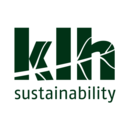Passivhaus for affordable housing
For many, occupying a building that meets the Passivhaus standard has been associated with elements of privilege. It is conceived that an individual’s wealth, or alternatively their depth of environmental knowledge determines whether the Passivhaus standard is accessible to them. Although this is far from being negative (as the more people engaging in energy efficient design, the better!), it has the potential to leave behind people who would benefit the most. People on low incomes often suffer the most when it comes to inefficient homes. Social housing or affordable houses, has in the past been prone to lower quality design and specification, causing them to be energy inefficient and thus expensive to run.
When designing affordable homes, build cost dominates the agenda. With this short-sighted, fragmented aim, we are missing the point of what it truly means to be ‘affordable’. Affordable housing is designed for low-income occupants. Therefore, it should npt just be efficient to build, it needs to be efficient to run. Passivhaus can help to achieve this.
It is almost like the Passivhaus standard was designed for development structures like medium density affordable housing, the type of which our cities are in desperate need. The core Passivhaus principles rest on designing homes that use as little operational energy as possible by achieving thermal comfort to the greatest practical extent through the use of passive measures.
While Passivhaus requires extensive design detailing and exceptional workmanship, the inherent repeatability and scalability of affordable housing schemes makes Passivhaus ever more feasible. Moreover, with the cost of the key Passivhaus features such as efficient mechanical ventilation with heat recovery, building materials such as air barrier membranes and insulation, and Passivhaus windows, achieving Passivhaus is becoming more accessible to the affordable housing market.
So, why isn’t Passivhaus more popular in the affordable housing market?
Common defences include ‘Passivhaus is more expensive’, ‘the tenants won’t know how to operate it’, ‘the skills required to build to Passivhaus standard are not readily available’ and so on.
Recently, local authorities have disproved these myths and are showing that Passivhaus is affordable, easily operable by tenants and can be achieved using locally-available skilled trades.
Take Norwich City Council as an example. In 2016 they set out to build the largest Passivhaus development in the UK with 100% affordable units. As one of the first to pursue Passivhaus on this scale, Norwich sought to create a network of organisations who have the expertise to deliver stringent Passivhaus requirements. The council pulled together the ‘Fabric First Framework’, a list of specialist contractors who have the necessary expertise, skilled trades and commitment to carry out Passivhaus. The Fabric First Framework is a growing list that can be publicly accessed by other local authorities or housing associations wishing to pursue similar projects.
Sustainability is a holistic concept. The intimate tie between social and environmental sustainability highlights the need for durable, energy efficient homes that help to break long-term cycles of fuel poverty, particularly for those in greatest need. Driving forward the Passivhaus standard in affordable housing schemes will enable us to improve social and environmental aspects of sustainability in unison.
[edit] Find out more
[edit] Related articles on Designing Buildings Wiki
Featured articles and news
RTPI leader to become new CIOB Chief Executive Officer
Dr Victoria Hills MRTPI, FICE to take over after Caroline Gumble’s departure.
Social and affordable housing, a long term plan for delivery
The “Delivering a Decade of Renewal for Social and Affordable Housing” strategy sets out future path.
A change to adoptive architecture
Effects of global weather warming on architectural detailing, material choice and human interaction.
The proposed publicly owned and backed subsidiary of Homes England, to facilitate new homes.
How big is the problem and what can we do to mitigate the effects?
Overheating guidance and tools for building designers
A number of cool guides to help with the heat.
The UK's Modern Industrial Strategy: A 10 year plan
Previous consultation criticism, current key elements and general support with some persisting reservations.
Building Safety Regulator reforms
New roles, new staff and a new fast track service pave the way for a single construction regulator.
Architectural Technologist CPDs and Communications
CIAT CPD… and how you can do it!
Cooling centres and cool spaces
Managing extreme heat in cities by directing the public to places for heat stress relief and water sources.
Winter gardens: A brief history and warm variations
Extending the season with glass in different forms and terms.
Restoring Great Yarmouth's Winter Gardens
Transforming one of the least sustainable constructions imaginable.
Construction Skills Mission Board launch sector drive
Newly formed government and industry collaboration set strategy for recruiting an additional 100,000 construction workers a year.
New Architects Code comes into effect in September 2025
ARB Architects Code of Conduct and Practice available with ongoing consultation regarding guidance.
Welsh Skills Body (Medr) launches ambitious plan
The new skills body brings together funding and regulation of tertiary education and research for the devolved nation.
Paul Gandy FCIOB announced as next CIOB President
Former Tilbury Douglas CEO takes helm.
UK Infrastructure: A 10 Year Strategy. In brief with reactions
With the National Infrastructure and Service Transformation Authority (NISTA).























